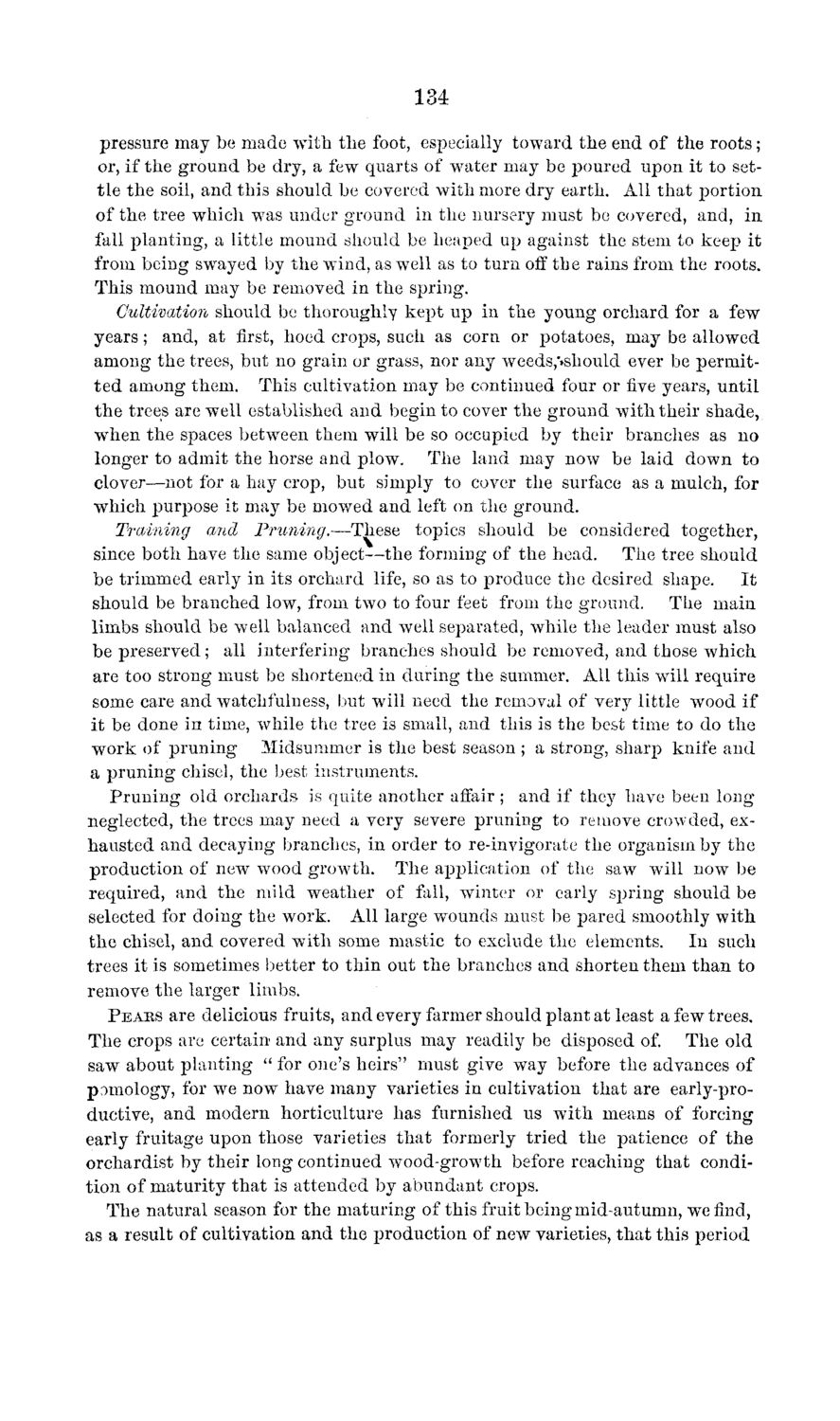| |
| |
Caption: Board of Trustees Minutes - 1869
This is a reduced-resolution page image for fast online browsing.

EXTRACTED TEXT FROM PAGE:
134 pressure may be made with the foot, especially toward the end of the roots; or, if the ground be dry, a few quarts of water may be poured upon it to settle the soil, and this should be covered with more dry earth. All that portion of the tree which was under ground in the nursery must be covered, and, in fall planting, a little mound should be heaped up against the stem to keep it from being swayed by the wind, as well as to turn off the rains from the roots. This mound may be removed in the spring. Cultivation should be thoroughly kept up in the young orchard for a few years; and, at first, hoed crops, such as corn or potatoes, may be allowed among the trees, but no grain or grass, nor any weeds,'»should ever be permitt e d among them. This cultivation may be continued four or five years, until the trees are well established and begin to cover the ground with their shade, when the spaces between them will be so occupied by their branches as no longer to admit the horse and plow. The land may now be laid down to clover—not for a hay crop, but simply to cover the surface as a mulch, for which purpose it may be mowed and left on the ground. Training and Pruning.—These topics should be considered together, since both have the same object—the forming of the head. The tree should be trimmed early in its orchard life, so as to produce the desired shape. It should be branched low, from two to four feet from the ground. The main limbs should be well balanced and well separated, while the leader must also be preserved; all interfering branches should be removed, and those which are too strong must be shortened in during the summer. All this will require some care and watchfulness, but will need the removal of very little wood if it be done in time, while the tree is small, and this is the best time to do the work of pruning Midsummer is the best season ; a strong, sharp knife and a pruning chisel, the best instruments. P r u n i n g old orchards is quite another affair ; and if they have been long neglected, the trees may need a very severe pruning to remove crowded, exhausted and decaying branches, in order to re-invigorate the organism by the production of new wood growth. The application of the saw will now be required, and the mild weather of fall, winter or early spring should be selected for doing the work. All large wounds must be pared smoothly with the chisel, and covered with some mastic to exclude the elements. In such trees it is sometimes better to thin out the branches and shorten them than to remove the larger limbs. P E A R S are delicious fruits, and every farmer should plant at least a few trees. The crops are certain and any surplus may readily be disposed of. The old saw about planting " for one's heirs" must give way before the advances of pomology, for we now have many varieties in cultivation that are early-productive, and modern horticulture has furnished us with means of forcing early fruitage upon those varieties that formerly tried the patience of the orchardist by their long continued wood-growth before reaching that condition of maturity that is attended by abundant crops. The natural season for the maturing of this fruit being mid-autumn, we find, as a result of cultivation and the production of new varieties, that this period
| |